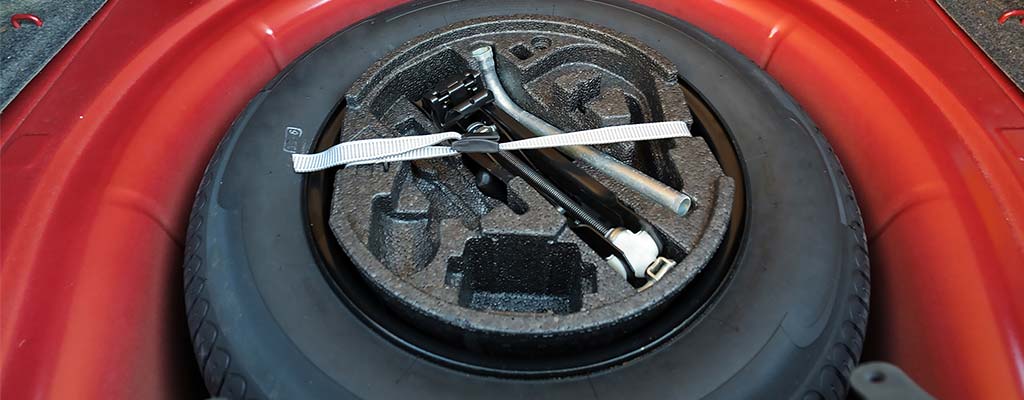You have already added that item to your appointment.

You have already added that item to your appointment.
The fact that spare tires are no longer standard equipment on many newer-model cars can come as a surprise when you get a flat tire. While many new light trucks and larger SUVs come with a spare, many new vehicles do not include a regular-sized spare.
About one-third of new vehicles are not equipped with a full-size spare tire. Instead, many are equipped with a space-saver (donut) spare or tire sealant and inflation kit.
Getting a flat tire is a major hassle and can be costly. Here’s what to know about spares, including why more vehicles don’t come with one, how to decide if you really need one, and the upsides and downsides of inflator kits.
The answer to that question is complicated as the number of vehicles that do not include a spare continues to change. See Consumer Reports partial list of spare-less vehicle models.
It can be difficult to tell which vehicles and models come with a spare and which don’t. Especially since some trim levels include a spare tire, but not all. Do your research before you head out to the dealership. And ask the sales rep directly. If you’ve recently bought a newer model car, be sure to double-check that it has a spare or flat tire option. That way you’re prepared in case of a flat.
There are several reasons why automakers have removed or minimized the spare tire.
According to most automakers, a spare tire should only be used to get from where you discovered your flat tire to the nearest tire repair shop. But what should you do when that spare tire needs to be replaced?
The answer depends on the type and size of spare that originally came with your vehicle. See Les Schwab to get the right spare for your vehicle.
Some new cars are coming from the factory equipped with inflator kits or run-flat tires that claim to make the spare tire unnecessary. There are upsides and downsides to these alternatives.
Run-flat tires were first designed decades ago to improve safety and steering performance of high-end sports cars in case of a tire failure. These tires were (and still are) built with either a reinforced sidewall or an internal support ring to carry the vehicle’s weight if the tire suddenly loses air pressure. Since then, run-flat tires have become more common on everyday vehicles, allowing drivers to travel without air in their tires for up to 50 miles at less than 50 MPH before getting the tire repaired or replaced.
Driving on a run-flat for even the shortest of distances will ruin the tire. This means it will need to be replaced. Plus, if you’re somewhere remote and get a flat, you may not be within range of the next tire repair shop. Other downsides include higher prices and reduced ride comfort.
Also known as a donut spare or space-saver tire, donut tires were designed to save space in smaller vehicles. If you drive a compact or smaller vehicle, you may have a space-saver spare.
These tires have less traction than your regular tires, are smaller, should not be driven at speeds over 50 miles per hour, and should not be used for more than 50 miles.
Self-sealing tires are coated on the inside with a special sealant. When an object on the road pierces the tread, the sealant material is designed to surround the object and prevent air from escaping from the tire. This gives you time to get to a tire repair shop.
The self-sealing tire won't work if a puncture is more than a quarter inch in diameter. They also don’t work for holes in the sidewall of the tire. Self-sealing tires can be difficult to repair.
Inflator/sealant kits offer a temporary fix for minor tread punctures. With many kits, you simply remove the cap from your tire’s air-inflation valve, connect the inflator kit, and then spray the sealant into the tire.
Tire sealant kits only work on small holes in the tread, and don’t work at all for slits or holes in the sidewall. Sealants also leave grime inside the tire that can affect your TPMS (tire pressure monitoring system), the safety equipment that alerts you if you’ve lost air in a tire. Any time you use a sealant, there is a good chance you’ll need to have the TPMS sensors replaced.
If you’re buying a new car, here are five tips to help decide if you need a spare, based on cost, safety and convenience, where you live, and what type of driving you do.
Les Schwab Tires Provides Free Flat Repairs. As long as you purchased your tires from us, we repair fixable flat tires for free. Find a store near you.